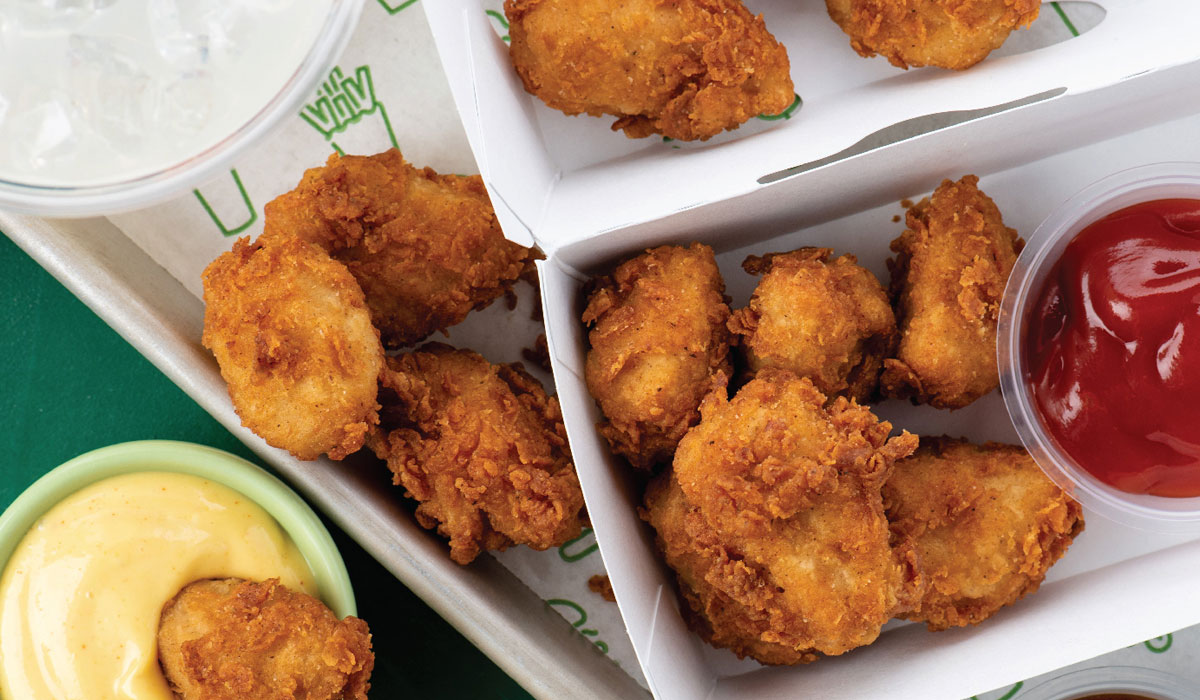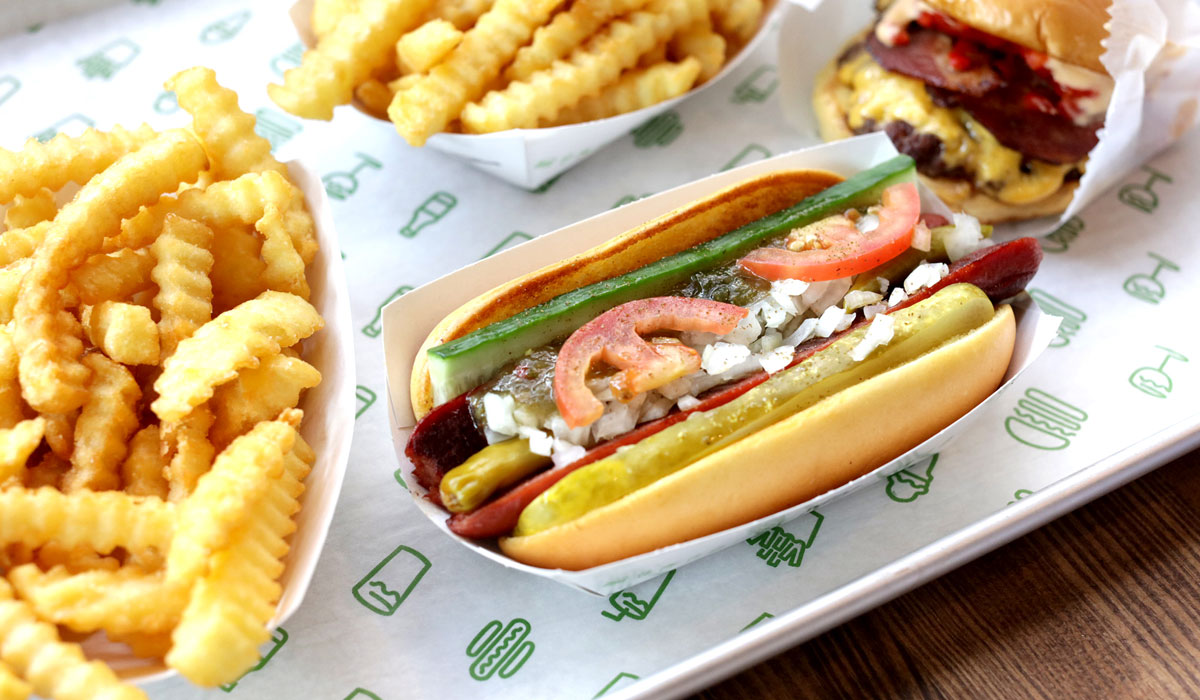Shake Shack is in the throes of expansion, but the growth is coming with some pains as the brand continues to solely integrate delivery with Grubhub and fill existing markets.
Same-store sales dropped 3.6 percent year-over-year in Q4 (85 units in the comp base). It broke out to a 1.8 percent increase in price and a 5.4 percent dip in traffic. The brand’s shares traded down nearly 15 percent following the report as weekly sales at corporate locations fell $10,000 from 2018 to $71,000. Store-level operating profit margins contracted by 2.1 percentage points to 20.4 percent as a result.
As it cautioned earlier in the year, the chain is transitioning to Grubhub on a market-by-market basis and exiting other vendors, some that enjoy better share and awareness in the area. And sales softness has followed. By the end of Q4, a little more than a quarter of stores were solely integrated as delivery experienced a notable slip in growth rate. As of now, about 50 percent of Shake Shacks are on board.
Shake Shack continues to expect “potentially significant volatility” in delivery through most of the year. The company also plans to invest in delivery through its app and website.
READ MORE: Why Shake Shack should be on everybody’s radar in 2020
“It’s hard to precisely quantify the impact of this transition,” president and CFO Tara Comonte said Monday during the company’s Q4 and annual review. “And since the announcement of our partnership, we know we have often been subject to less prominent site placements, higher pricing and, in some cases, removal from the marketplace entirely. So why endure this volatility in the near term? Our goal in delivery remains unchanged: To prioritize guest experience while capturing long-term revenue growth.”
The brand also attributed its negative figures to cannibalization. Comonte said Shake Shack experienced a record development year in which it opened 39 domestic corporate stores, 80 percent of which were in existing markets. Ten domestic licensed stores opened, as well. The impact of cannibalization is expected through 2020. To put that in perspective, all 12 of Shake Shack’s new company-run units in Q4 were in markets where the chain already operates.
“At only 167 company-operated Shacks today, having added $129 million in Shack sales in the year and with significant growth planned for many years to come, we remain confident in our strategy,” Comonte said. “While we don’t believe our aggressive market expansion to be the sole reason for negative traffic in the quarter, it can at times have a short-term impact on existing Shacks. We remain focused on growing overall sales and gaining market Shack, one Shack at a time and toward a much bigger footprint in the U.S.”
In addition, Comonte said negative traffic was caused by one less high-traffic shopping week, favorable weather in Q4 last year, and a reduction in menu innovation and promotional activity.
The brand opened 73 stored in 2019, which translates to a net increase of 32.2 percent. Shake Shack ended the year with 275 units systemwide (163 domestic corporate stores, 22 domestic licensed stores, and 90 international licensed stores). The company expects to open between 40 and 42 company-operated stores in 2020, with 90 percent in existing markets. Twenty to 25 net new licensed Shacks are projected to open, too.

Annual same-store sales increased by 1.3 percent in 2019. Because of the anticipated pressure from the Grubhub transition and store cannibalization, same-store sales for 2020 are projected to dip low single digits.
Average-unit volume at domestic company-operated stores decreased 6.8 percent to $4.1 million, primarily due to the addition of new stores in lower AUV markets. By the end of this year, AUV for all company-operated Shacks is expected to be between $3.7 million and $3.8 million. Revenue increased 29.4 percent to $594.5 million in 2019—due primarily to store openings and same-store sales growth—and increased 21.9 percent to 151.4 million in Q4.
Shake Shack hopes to offset negative traffic by increasing menu innovation and focusing on digital avenues.
So far this quarter, the brand brought back the ShackMeister Burger LTO—a Shack Burger topped with shallots, marinated in ShackMeister Ale beer, and crisp-fried. In Q2, the chain will bring back Hot Chick’n and expand the category with the addition of Hot Chick’n Bites.
“We believe Chick’n Bites have a variety of use cases and attach opportunities as an add-on for a group to share, trade up, or ordered on their own,” CEO Randy Garutti said. “We’re seeing the transactions containing Bites generally carry a higher average check. And this, along with guest feedback and overall positive sales performance, encourage us to move them to the core menu while still monitoring ongoing performance.”
Shake Shack will soon feature various heat levels, including a fire level that is exclusive to digital channels. That rollout will be paired with a new ranch dressing. The company also plans to rotate more shake flavors, test a smaller shake size, and test a Veggie Shack Burger comprised of 13 vegetables, herbs, and grains.
As for the overall Shake Shack experience, the brand is piloting new kitchen flows and layouts, kiosk ordering, and separate pickup areas for web, app, and delivery. Shake Shack bolstered its tech and marketing talent and created a new op support team to lead digital growth.
“Our goal is to better engage with our guests across their preferred channel and add reasons to come to the Shack for the first time or to return more frequently,” Garutti said. “We’re building more sophisticated front and back ends across our digital ecosystem. We’re working to tie all our guest data together so we gain a better cross-channel view and deliver insights and opportunities to reengage with our guests more frequently. Our biggest goal is to continue to grow traffic to our own channels over time.”
In regard to labor, Shake Shack continues to test four-day work weeks for managers. It’s operational in about 33 percent of Shake Shacks, and Garutti said the format has drawn positive feedback thus far. It’s contributed to an increase in applicants, specifically female candidates.
Garutti said Shake Shack is still a young company, and will own the fact that it needs to continue to learn. He added that even though the brand has much work to do, the restaurant is getting better.
“While we expect 2020 to have its challenges, there’s a lot going on in the business going through this much growth,” Garruti said. “We’re thankful for the incredible teams and leaders fueling this company’s growth and the tremendous runway we have ahead.”






